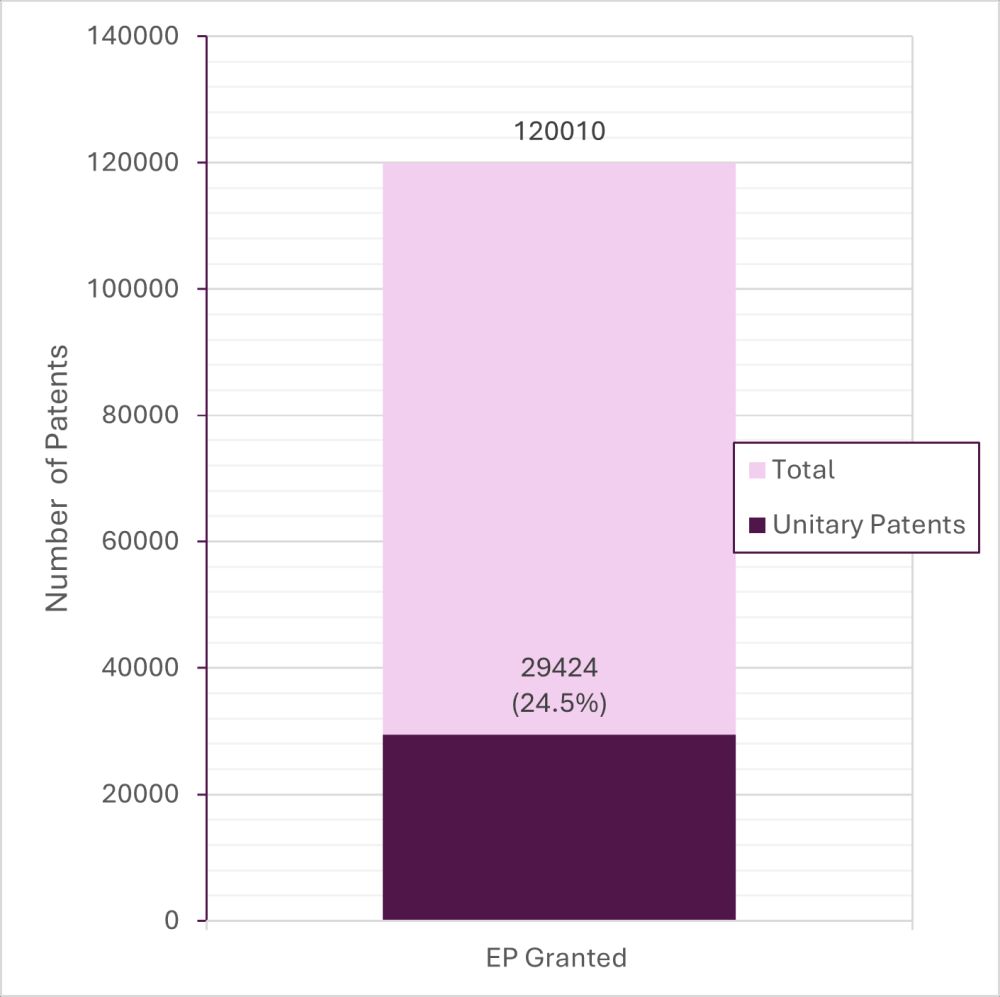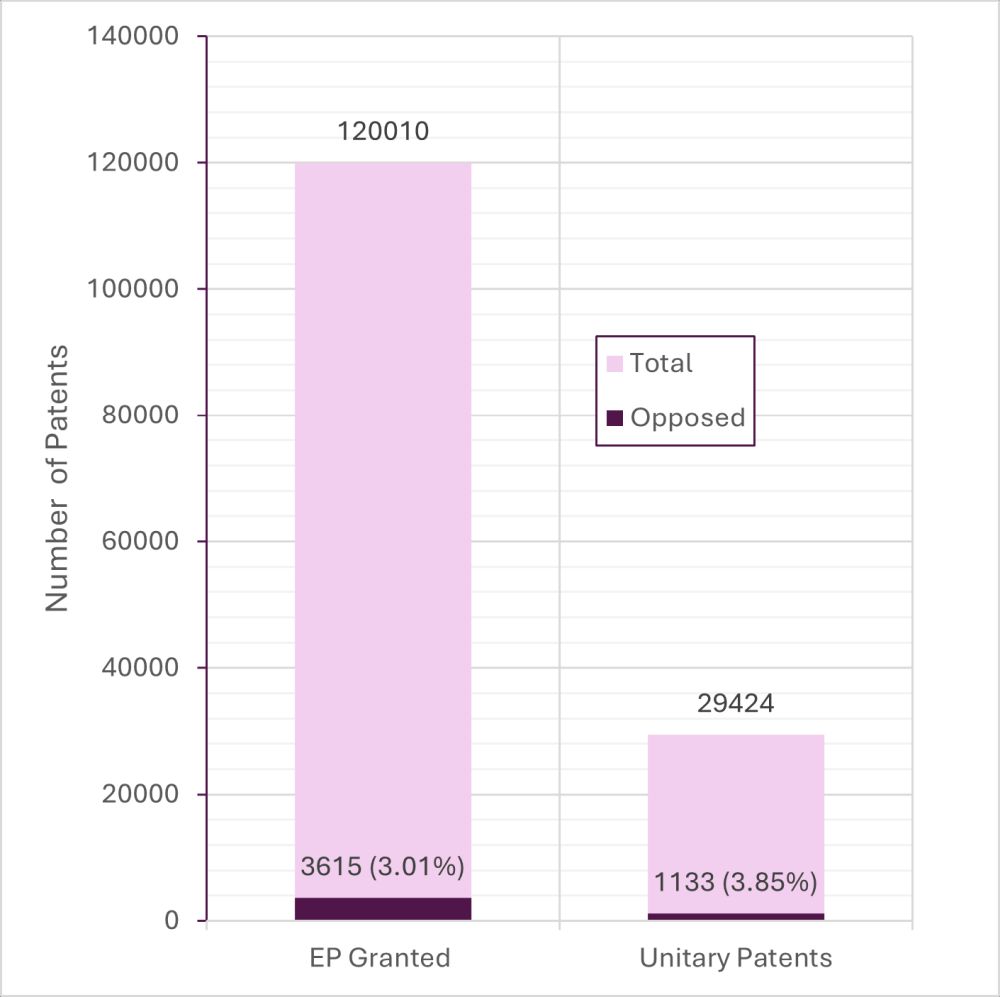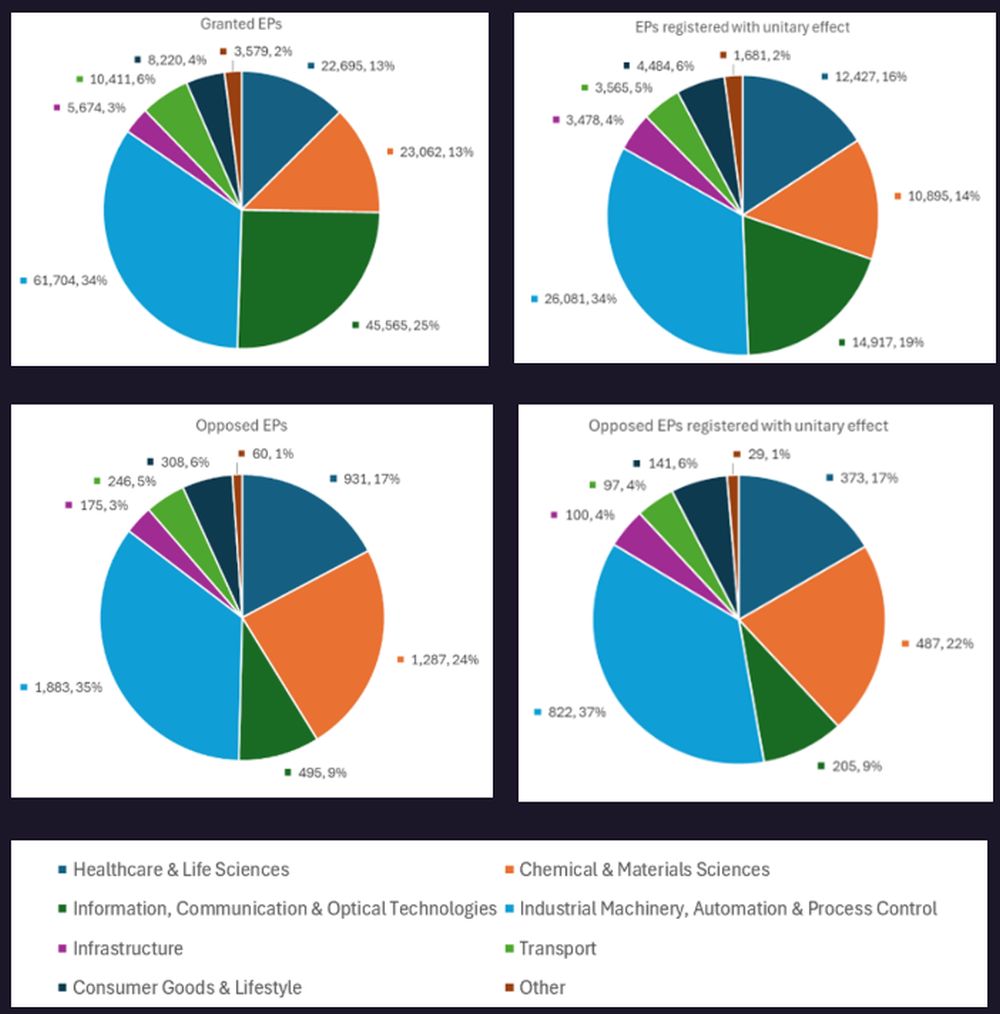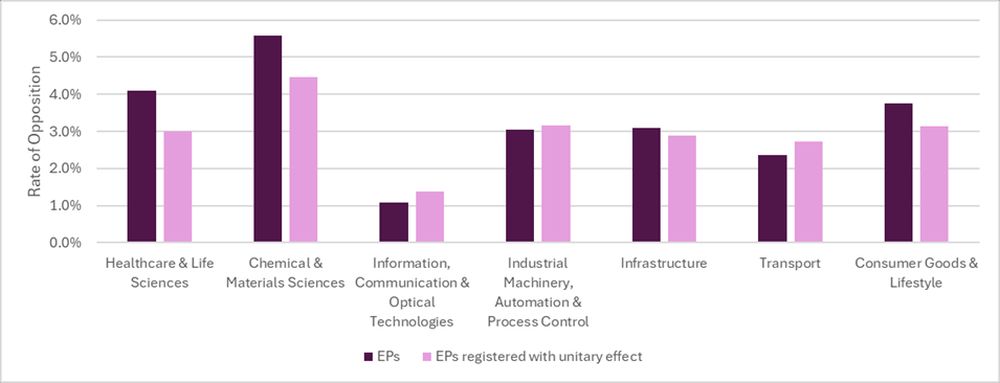- within Intellectual Property topic(s)
- in United States
The introduction of the Unified Patent Court (UPC) has brought
significant changes to the European patent landscape. This article,
written by Nathaniel Taylor (of Keltie's Opposition and Appeals
team), takes a closer look at the impact of the UPC on opposition
proceedings at the European Patent Office (EPO).
The article draws on a full year's worth of opposition data -
available as of 1 April 2025 - for European patents granted since
the Unitary Patent system began (i.e., European patents granted
between 1 June 2023 and 1 June 2024). The analysis explores overall
trends, technology-specific patterns, and the strategic motives
behind relative opposition rates.
Data Overview
EPs registered with unitary effect:
Figure 1 shows 120,010 European Patents (EP)s were granted during the period from 1 June 2023 to 1 June 2024, and approximately one-in-four (29,424) of these EPs were registered with unitary effect, forming so-called Unitary Patents.

Figure 1
Rates of Opposition:
Figure 2 shows that 3,615 oppositions were filed at the EPO against the granted EPs, and 1,133 of those oppositions were filed against the EPs that were registered with unitary effect.
From this, we can see that EPs registered with unitary effect are being opposed at a relatively high rate (3.85%) compared to all EPs (3.01%) granted during the same period, and an even higher rate compared to those EPs not registered with unitary effect (2.74%).

Figure 2
Possible Reasons for Higher Opposition Rates
1. Lower Costs of Oppositions at the EPO: One reason for the higher opposition rates of unitary patents is the lower costs associated with filing oppositions at the EPO compared to the UPC.
The official fee for filing a revocation action at the UPC is €20,000, which is greater than most national court fees for individual countries and far exceeds the official fees for filing an opposition at the EPO (currently €880).
For reference, there have only been 55 standalone revocation actions filed at the UPC.
2. Strategic Benefits: Beyond cost savings, there are strategic benefits to filing oppositions at the EPO. By challenging the validity of the patent centrally and early, clients can potentially limit the scope of the patent, reducing the risk of infringement and increasing certainty regarding the patent's scope. This proactive approach can help avoid costly litigation and enforcement actions later on. This is particularly important for companies operating in highly competitive industries where the risk of patent litigation is high. By resolving potential validity issues early, clients can gain a clearer understanding of the patent landscape and make more informed business decisions.
3. Uncertainty Regarding the UPC: Another factor contributing to the higher opposition rates is the uncertainty surrounding the new UPC and the court's approach to key patentability criteria, such as novelty and inventive step. Early indicators suggest that there will be some differences in outcomes between the UPC and the EPO, with the UPC taking a more holistic approach, more akin to the approach of some national courts.
For the time being, the greater certainty associated with the relatively well-established and predictable decision making of the EPO may act as another driver for increased opposition filings.
That said, certain technologies have long been associated with higher rates of opposition (and litigation). For example, chemistry has traditionally been the most opposed technology area at the EPO, with food chemistry technologies typically being opposed at rates greater than 10%, closely followed by oppositions relating to pharmaceuticals and polymer technologies.
This raised the question of whether EPs relating to different technology areas were being registered with unitary effect disproportionately and thereby contributing to the relatively high rate of Oppositions.
To further understand this question, the identified patents were categorized into eight technology areas,Healthcare & Life Sciences; Chemical & Materials Sciences; Information, Communication & Optical Technologies; Industrial Machinery, Automation & Process Control; Infrastructure; Transport; Consumer Goods & Lifestyle; and Other, and the relative proportions are shown in Figure 3 below.

The proportion of EPs relating to Healthcare & Life Sciences technologies that are being registered with unitary effect is therefore relatively high (16% of all unitary patents compared to 11.3% all non-unitary patents), while relatively low proportions of EPs relating to Information, Communication& Optical technologies are being registered with unitary effect (19% of all unitary patents to 33.8% of all non-unitary patents).
Notably though, almost identical proportions of Oppositions were filed amongst the respective technology areas when comparing all EPs and those EPs that are registered with unitary effect.
However, Figure 4 shows the respective rates of opposition amongst the technology areas for EPs and those EPs that are registered with unitary effect:

Figure 4
Contrary to initial expectations that some technology areas (e.g., chemistry or pharmaceuticals) might disproportionately drive opposition rates, the data demonstrate a relatively uniform filing rate across sectors for EPs registered with unitary effect. This uniformity suggests that the factors influencing opposition decisions—cost, timing, and legal certainty—are pervasive across industries.
Conclusion
The early impact of the Unified Patent Court on opposition proceedings at the EPO reveals a compelling trend: unitary patents experience higher opposition rates, driven by lower opposition costs, strategic advantages, and judicial uncertainties in the UPC. As the UPC legal infrastructure evolves, its long-term influence on patent litigation and business strategy in Europe will warrant close monitoring.
The content of this article is intended to provide a general guide to the subject matter. Specialist advice should be sought about your specific circumstances.


